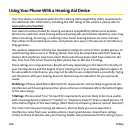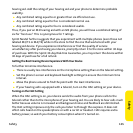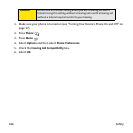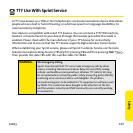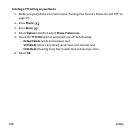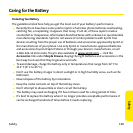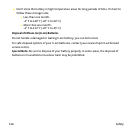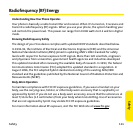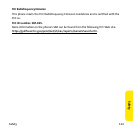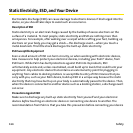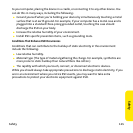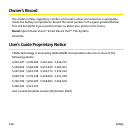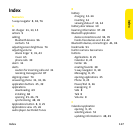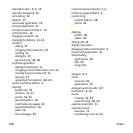
Safety 111
Safety
Radiofrequency (RF) Energy
Understanding How Your Phone Operates
Your phone is basically a radio transmitter and receiver. When it’s turned on, it receives and
transmits radiofrequency (RF) signals. When you use your phone, the system handling your
call controls the power level. This power can range from 0.006 watts to 0.2 watts in digital
mode.
Knowing Radiofrequency Safety
The design of your Treo device complies with updated NCRP standards described below.
In 1991-92, the Institute of Electrical and Electronics Engineers (IEEE) and the American
National Standards Institute (ANSI) joined in updating ANSI’s 1982 standard for safety
levels with respect to human exposure to RF signals. More than 120 scientists, engineers
and physicians from universities, government health agencies and industries developed
this updated standard after reviewing the available body of research. In 1993, the Federal
Communications Commission (FCC) adopted this updated standard in a regulation. In
August 1996, the FCC adopted hybrid standard consisting of the existing ANSI/IEEE
standard and the guidelines published by the National Council of Radiation Protection and
Measurements (NCRP).
Body-Worn Operation
To maintain compliance with FCC RF exposure guidelines, if you wear a handset on your
body, use the carrying case, holster, or other body-worn accessory that is supplied by or
approved by Sprint. If you do not use a body-worn accessory, ensure that the antenna is at
least 7/16 inches (1.5 centimeters) from your body when transmitting. Use of accessories
that are not approved by Sprint may violate FCC RF exposure guidelines.
For more information about RF exposure, visit the FCC Web site at www.fcc.gov
.




